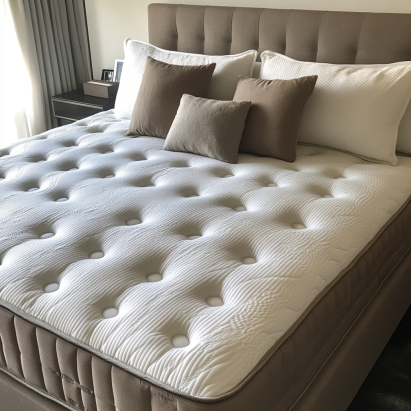Sleeping on an Incline: 7 Surprising Benefits for Better Rest
Sleeping on an incline can be a game-changer if you struggle with reflux, snoring, or congestion. By slightly elevating your upper body, you may find calmer nights and easier mornings. Let’s explore how this simple change can transform your sleep setup.
Key Takeaways
- Sleeping on an incline usually means raising the head of your bed by 6–8 inches so gravity supports your body while you rest.
- It can help ease acid reflux, reduce snoring, clear sinuses, and support circulation.
- Simple tools like wedge pillows, risers, or adjustable beds make it easy to start.
- Comfort and consistency matter most for seeing lasting benefits.

Why Sleeping on an Incline Matters More Than You Think
When you’re lying flat, gravity isn’t doing you any favors. By slightly elevating your upper body, you reduce pressure on your stomach and lungs—leading to less reflux, clearer airways, and improved blood flow. Even a modest 6–8 inch lift can bring noticeable improvements.
Want a deeper dive into the science and experiences? Explore our Inclined Bed Therapy Benefits Guide.
How Inclined Sleep Helps With Reflux and Breathing
Reflux Relief Without the Meds
If you deal with nighttime acid reflux, you know how uncomfortable it can be. Elevating your upper body helps stomach acid stay in place. According to the Cleveland Clinic, head-of-bed elevation is among the most effective non-medication methods for managing GERD. Learn more here.
Want a personal perspective? Here’s a real-life story about how gentle elevation improved sleep quality.
Better Breathing = Deeper Sleep
Sleeping flat can narrow the airway, especially if you snore or experience sleep apnea. A mild incline helps keep passages open so you breathe easier and wake less often. See the NHLBI overview of sleep apnea and the National Sleep Foundation’s guide on sleep positions.

Who Should Consider It (and Who Shouldn’t)
Inclined sleeping is generally gentle and non-invasive. It’s often used by people with reflux, snoring, nasal congestion, or mild positional apnea. Pregnant sleepers and those with cardiovascular or spinal issues should check with a clinician first to confirm the safest angle.
Easy Ways to Try Sleeping on an Incline
Use a Wedge Pillow
Wedge pillows are firm, triangular pillows that lift your upper body while keeping you aligned. Memory foam models contour well and help maintain posture through the night.
Adjust Your Bed Frame
Bed risers or adjustable bases can raise the entire head of your bed. A 6–8 inch lift is usually enough. For detailed methods, see our Sleeping on an Incline Guide.

Try Extra Pillows (with Caution)
Stacking pillows might seem easy, but they often shift and create awkward angles. If you try it, support your shoulders and spine to prevent strain.
But Won’t It Be Uncomfortable?
It may feel unusual at first, but most people adjust within a few nights. You can ease in by using a wedge for part of the night and gradually increase. DIY enthusiasts can check out Kim Holman’s incline setup.
Light sleepers may also benefit from sound masking while adjusting. See our white noise primer for easy options.
What to Avoid When Sleeping on an Incline
Don’t Just Prop Up Your Head
Raising only your head with loose pillows can strain your neck. Aim for a smooth slope that lifts your entire upper body.
Watch for Sliding
If your mattress or bedding is slick, you may slide during the night. Non-slip mattress pads or grippy wedges can prevent shifting.

Final Thoughts: Is Inclined Sleeping Right for You?
Sleeping on an incline isn’t a one-size-fits-all solution, but if you struggle with reflux, snoring, or sinus congestion, it’s a low-effort adjustment worth trying. It could be the small change that leads to better sleep and refreshed mornings.
For more detail, see our step-by-step guide and our deep dive into Inclined Bed Therapy benefits.
FAQ
- Is inclined sleeping safe for everyone?
- Generally, yes—but people with health conditions should check with a provider first.
- Can I use regular pillows to achieve the incline?
- Not ideal. Loose pillows slip and strain your neck. Wedge pillows or risers are better.
- How long does it take to see benefits?
- Some notice improvements in a few nights. Others may need a couple of weeks.
- Will my mattress slide down?
- It can. Use non-slip mats or wedges with grip features.
- Can inclined sleeping help beyond reflux?
- Yes—it may also improve circulation, reduce snoring, and ease sinus congestion.























